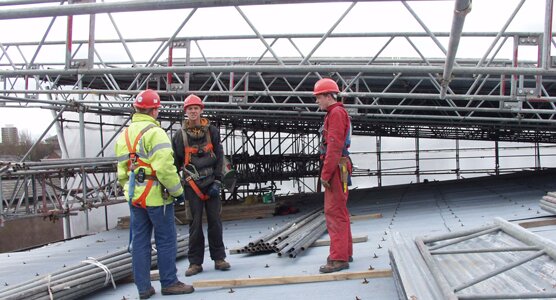Delivering heritage advice

At the present time, local authorities are responsible for the conservation of 95% of the historic environment including Listed Buildings, archaeological sites and monuments, historic landscapes, historic parks and gardens and historic battlefields. Local authorities also work in partnership with English Heritage on the conservation of Scheduled Monuments and Grade 1 and 2* Listed Buildings.
English Heritage has a statutory role as the Government’s advisor on the historic environment and advises local planning authorities and Government Departments on development proposals affecting listed buildings, conservation areas, scheduled monuments and registered parks and gardens. English Heritage usually only gets involved in schemes which have the potential for major change to nationally important heritage assets. English Heritage publishes a wide range of policy and guidance on managing the historic environment.
- This situation is in the process of change. A draft Heritage Protection Bill published on Wednesday 2 April 2008, aims to alter heritage protection as it is currently provided. The new system will close gaps in protection, see the devolvement of decisions from existing levels, eg from central government to English Heritage, and from English Heritage to local authorities.
- The new system will bring all of England’s heritage together in one single, publicly accessible list. This statutory list will be available online and will explain what is special and why. For the first time maritime wrecks and World Heritage Sites will be included.
- Local authorities will be encouraged by new statutory powers, to develop their Sites and Monument Record into fully inclusive Historic Environment Records covering both archaeological and built historic assets. They will also be given the powers to grant all new Historic Asset Consents - abolishing the role of central government in granting Scheduled Monument Consent (around 2% of all applications). English Heritage will give expert advice where applicable.
Archaeological and Conservation Services
- Under the current system, advice on archaeology and the built historic environment is delivered in slightly different ways, and protected by different policies. Archaeological services tend traditionally to sit within County Councils while Buildings Conservation Officers work from lower tier planning authorities such as borough and dictrict. This may change in the future as the historic environment is managed more holistically and Local Authorities begin to manage their devolved powers, but regardless of the implementation of a new system, the local authority historic environment service should be contacted at the earliest stage of developing a proposal to help achieve quality results with efficient use of resources.
These pages will be updated when the new legislation comes into effect.
What's New?
-
The National Heritage List for England is now live on the English Heritage website.
-
Welcome to the HER21 page. This page offers access to the full suite of HER21 project reports.
